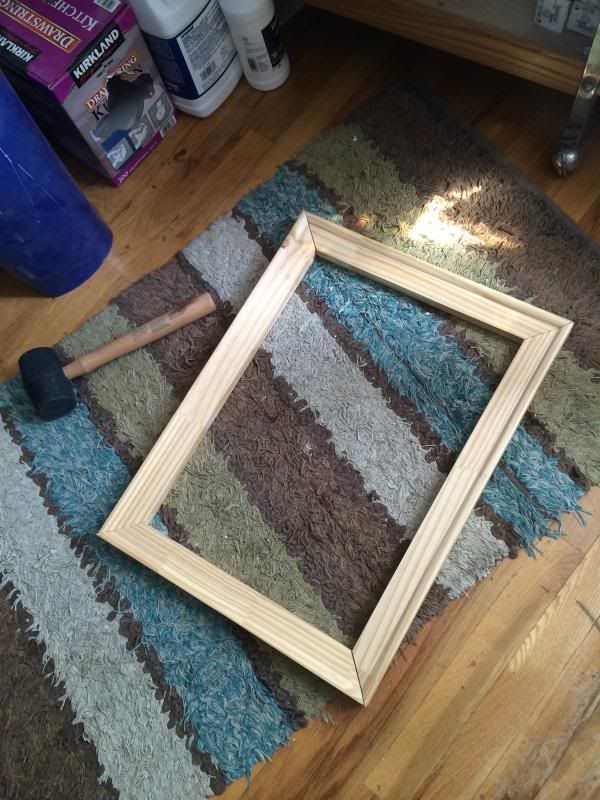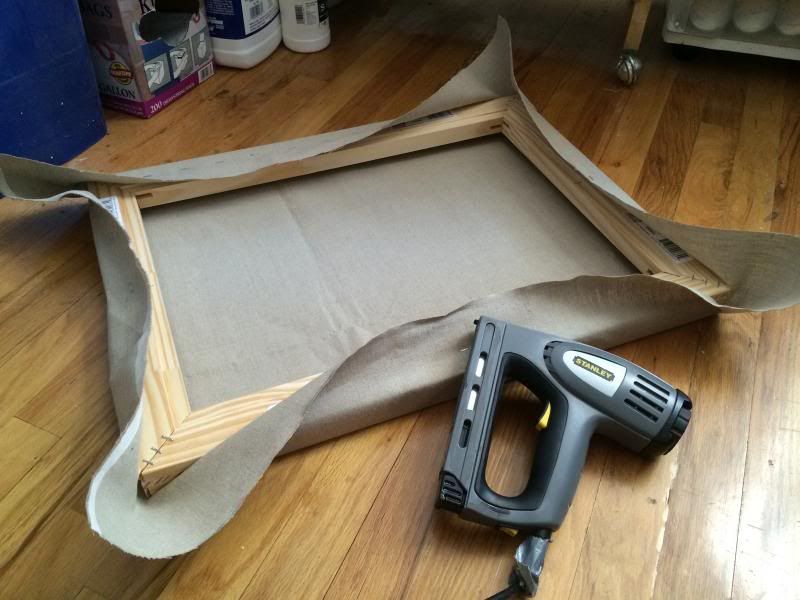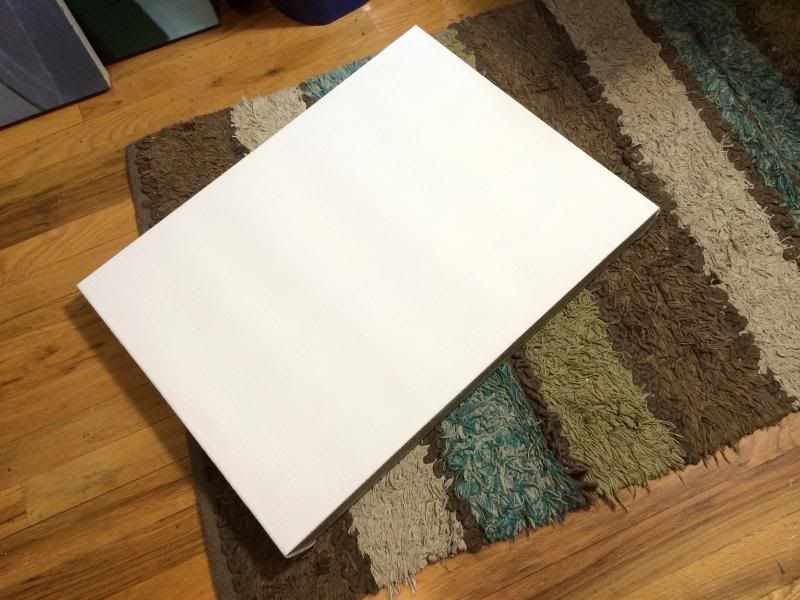Hey all,
So, I wanted to update everyone on the status of this thing. I'm sorry that it's been taking a long time to get going, but there have been some issues with the image that John selected. I mean, not issues with John's choice, but issues with the image itself. Unfortunately, the nature of the whole thing is that the rights to it are owned by a third party who can be rather...um...flaky. In other words, I'm at their mercy right now.
I'm not going to post his actual choice until I'm completely sure that we can do it (I'm supposedly getting word and the scan in a few days), and even then, maybe I'll leave that part to John, as what he chose really reverberated with him. I can tell you for sure that it'll make a great painting.
In the meantime, I did purchase the necessary supplies for the piece, starting off with the stretcher bars, which I constructed below.

When selecting a linen, I end up trying different kinds and brands, as the weight and weave will vary. I think most of the time, I end up getting one that has a medium to smooth weave, which is nice for portraiture and heavy paint. Also, when I need to sand or scrape things down, the weight of the linen can withstand a beating.
A day or two after the bars were stapled into place, the linen arrived in the mail, which I then stretched onto the frames.

When that's taken care of, a coat of matte medium (which is water-based) is applied to the stretched frame. Traditionally when working with oils, artists would apply rabbit skin glue or other substrates to act as a boundary between the paint and the linen. Reason being is that over time, if the raw linen had oil paint applied to it (whether intentionally or not), the area can start to rot. We're talking 100-200 years down the line, but the goal is to be as archival as possible without being insane. In the photo below, I did a few at once.

After a day or so, the canvas was coated with acrylic gesso, which is that white stuff you're seeing on top. This is normally how I set these things up, though every now and again, I'll use an oil primer and not an acrylic one. Reason being is that paint reacts differently with each primer, and for the most part, the gesso surface is more along the lines of what I enjoy working with. Generally speaking, the paint tends to grab the surface and sit on top of it. I find that with oil primer, the paint sinks into it and dries quicker, which is not a bad thing by any stretch, but is not really the way I like attacking the thing. Of course, they're plenty of purists who would turn their noses up at the idea of using anything other than oil primer for their surface, and their certainly welcome to those opinions. However, I just work with what I like to work with.
Anywho, two coats of gesso are applied, and sanding occurs between the both of them (first a light one, and then a heavier one). At the end, the surface ends up being pretty smooth (the severity of which depends on the weave of the linen - a wider and heavier weave won't ever be super smooth).

From here, the thing is ready to be drawn on. And once I get the appropriate image, I'll be able to do as such.
Hopefully this shop talk isn't too boring to anyone. I just figured that some of you might be interested in the process from that point of view. If not, I can certainly keep it less intense.
Either way, thanks for reading, and thanks again for participating!
Graig